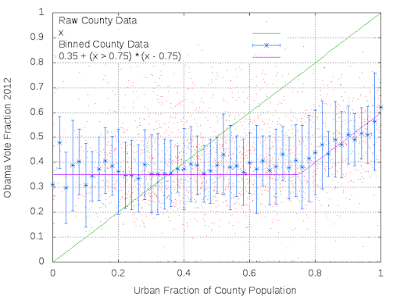Basketball
Basically my solution this time was:
- Check with Julie that no team went undefeated this year. That was my big problem last time.
- Run the 2016, 2015, and 2014 game solutions to determine the relative rankings for all of the teams in each of those years.
- Rank things based on the 2016 solution, letting 2015 solutions break ties. Also use this information (and the 2014) for solutions to:
- Anytime a #12 sport-ranked team is ranked substantially above a 1-4 sport-ranked team, assume something is off with the model, because I have a lot of #12 ranked teams ranked really high for some reason.
So the result table is:
#2014.score 2015.score 2016.score group game sport-rank 2016.score Team.name
23.437500 28.125000 40.625000 1 1 1 40.625000 Kansas
-9.375000 -21.875000 1.562500 1 1 16 1.562500 Austin Peay
18.750000 -3.125000 17.187500 1 2 8 17.187500 Colorado
29.687500 7.812500 20.312500 1 2 9 20.312500 Connecticut
3.125000 32.812500 26.562500 1 3 5 26.562500 Maryland
9.375000 20.312500 29.687500 1 3 12 29.687500 S Dakota St
10.937500 4.687500 20.312500 1 4 4 20.312500 California
14.062500 14.062500 34.375000 1 4 13 34.375000 Hawaii
40.625000 43.750000 26.562500 1 5 6 26.562500 Arizona
NAN NAN NAN 1 5 11 NAN VAN/WICH
1.562500 18.750000 28.125000 1 6 3 28.125000 Miami FL
14.062500 21.875000 9.375000 1 6 14 9.375000 Buffalo
12.500000 15.625000 17.187500 1 7 7 17.187500 Iowa
-20.312500 23.437500 15.625000 1 7 10 15.625000 Temple
37.500000 46.875000 37.500000 1 8 2 37.500000 Villanova
3.125000 -1.562500 17.187500 1 8 15 17.187500 UNC Asheville
21.875000 20.312500 34.375000 2 1 1 34.375000 North Carolina
NAN NAN NAN 2 1 16 NAN FGCU/FDU
-15.625000 -12.500000 14.062500 2 2 8 14.062500 USC
18.750000 17.187500 20.312500 2 2 9 20.312500 Providence
3.125000 10.937500 28.125000 2 3 5 28.125000 Indiana
4.687500 18.750000 37.500000 2 3 12 37.500000 Chattanooga
20.312500 53.125000 26.562500 2 4 4 26.562500 Kentucky
18.750000 17.187500 31.250000 2 4 13 31.250000 Stony Brook
-3.125000 37.500000 15.625000 2 5 6 15.625000 Notre Dame
NAN NAN NAN 2 5 11 NAN MICH/TULSA
1.562500 21.875000 28.125000 2 6 3 28.125000 West Virginia
45.312500 39.062500 34.375000 2 6 14 34.375000 SF Austin
29.687500 42.187500 12.500000 2 7 7 12.500000 Wisconsin
25.000000 6.250000 15.625000 2 7 10 15.625000 Pittsburgh
14.062500 12.500000 34.375000 2 8 2 34.375000 Xavier
12.500000 -6.250000 26.562500 2 8 15 26.562500 Weber St
21.875000 25.000000 34.375000 3 1 1 34.375000 Oregon
NAN NAN NAN 3 1 16 NAN HC/SOUTH
23.437500 -7.812500 29.687500 3 2 8 29.687500 St Joseph's PA
32.812500 18.750000 18.750000 3 2 9 18.750000 Cincinnati
20.312500 23.437500 17.187500 3 3 5 17.187500 Baylor
7.812500 18.750000 25.000000 3 3 12 25.000000 Yale
28.125000 40.625000 20.312500 3 4 4 20.312500 Duke
-21.875000 6.250000 28.125000 3 4 13 28.125000 UNC Wilmington
20.312500 10.937500 12.500000 3 5 6 12.500000 Texas
1.562500 42.187500 15.625000 3 5 11 15.625000 Northern Iowa
3.125000 14.062500 29.687500 3 6 3 29.687500 Texas A&M
26.562500 23.437500 17.187500 3 6 14 17.187500 WI Green Bay
0.000000 4.687500 10.937500 3 7 7 10.937500 Oregon St
28.125000 26.562500 23.437500 3 7 10 23.437500 VA Commonwealth
21.875000 18.750000 28.125000 3 8 2 28.125000 Oklahoma
-9.375000 -7.812500 25.000000 3 8 15 25.000000 CS Bakersfield
34.375000 40.625000 29.687500 4 1 1 29.687500 Virginia
7.812500 -1.562500 17.187500 4 1 16 17.187500 Hampton
-6.250000 -9.375000 10.937500 4 2 8 10.937500 Texas Tech
-4.687500 18.750000 17.187500 4 2 9 17.187500 Butler
-3.125000 14.062500 29.687500 4 3 5 29.687500 Purdue
-3.125000 -7.812500 37.500000 4 3 12 37.500000 Ark Little Rock
29.687500 26.562500 15.625000 4 4 4 15.625000 Iowa St
17.187500 26.562500 18.750000 4 4 13 18.750000 Iona
0.000000 1.562500 26.562500 4 5 6 26.562500 Seton Hall
34.375000 46.875000 29.687500 4 5 11 29.687500 Gonzaga
14.062500 25.000000 28.125000 4 6 3 28.125000 Utah
4.687500 -3.125000 25.000000 4 6 14 25.000000 Fresno St
20.312500 26.562500 28.125000 4 7 7 28.125000 Dayton
34.375000 7.812500 9.375000 4 7 10 9.375000 Syracuse
28.125000 18.750000 35.937500 4 8 2 35.937500 Michigan St
23.437500 3.125000 23.437500 4 8 15 23.437500 MTSU
-1.562500 10.937500 9.375000 5 1 11 9.375000 Vanderbilt
53.125000 37.500000 25.000000 5 1 11 25.000000 Wichita St
14.062500 17.187500 10.937500 5 2 16 10.937500 FL Gulf Coast
-17.187500 -20.312500 6.250000 5 2 16 6.250000 F Dickinson
26.562500 0.000000 15.625000 5 3 11 15.625000 Michigan
14.062500 18.750000 14.062500 5 3 11 14.062500 Tulsa
9.375000 -3.125000 -7.812500 5 4 16 -7.812500 Holy Cross
9.375000 1.562500 15.625000 5 4 16 15.625000 Southern Univ
So, using this, I can answer the following questions I saw while doing the research of "figuring out what FLGU means".
- I saw a thing asking if Holy Cross was underrated. My analysis says "no," and concludes with a "holy crap, no."
- Kansas is probably going to win it all.
- Julie was right, Michigan State should have been ranked higher than Virginia.
- I've already scored the two group 5 games that have played correctly.
Using the espn clicky thing to use these rules (I bent rule #4 to also apply to 13-ranked teams as well):
 |
| Group 1 and 2. |
 |
| Group 3 and 4. |
 |
| Final stuff. I don't know how to call the score thing. They're separated by ~4 points in the scores, or about 10%. So maybe 10 points, since basketball is a "log10(score) ~ 2" kind of game? |
For the remaining pre-game things, I have Michigan and Southern University winning those (in addition to the correctly called Wichita State and Florida Gulf Coast).















































